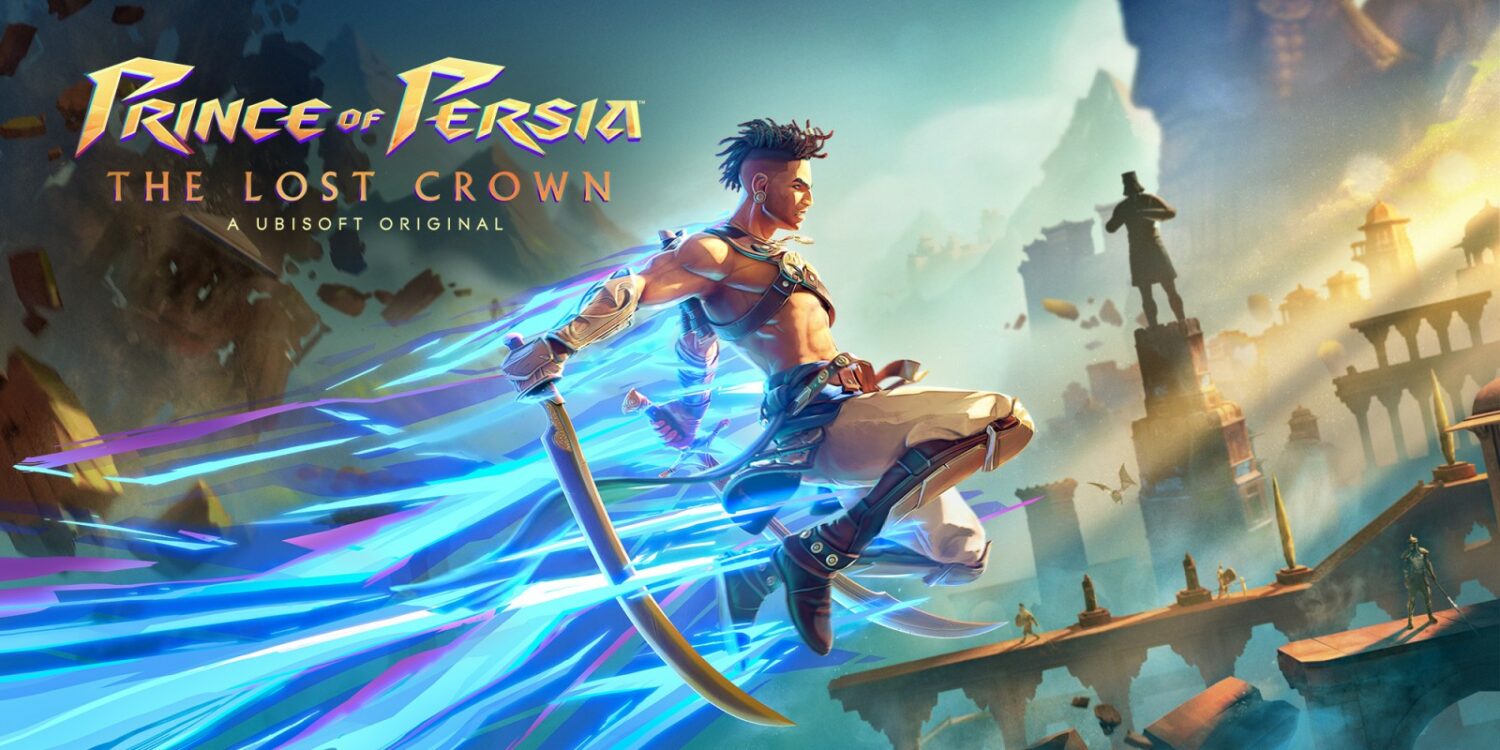Prince of Persia: The Lost Crown has a lot riding on it. It hopes to be a return to form for the long-running series, marking the first major installment since 2010’s The Forgotten Sands. It takes the classic, side-scrolling, exploratory approach that we know and love and throws in impressive visuals, a new story, and some neat tricks of its own.
The Lost Crown isn’t a sequel or (thankfully) a prequel. Instead, the developers have created an original outing based on the classic formula. The story follows a new protagonist named Sargon. This legendary warrior is a member of an elite group known as the Immortals. A brilliantly animated intro depicts an epic battle in progress, spurned by invaders into Persia. We join Sargon and his crew towards the end of this war. However, their victory is short-lived, soon followed by a deception from within the palace that leads to further adventure.
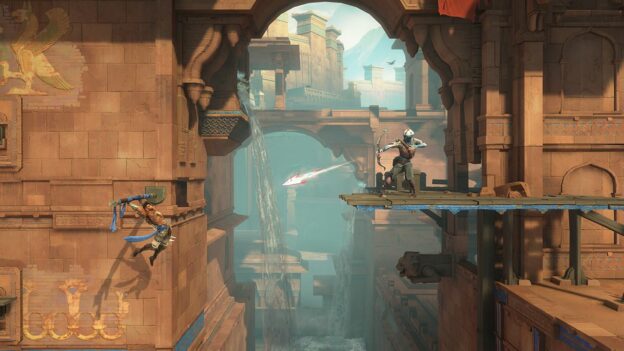
This narrative takes us to an exciting new land known as Mount Qaf. It’s impressive to see the developers take us to a world unrestricted by genre tropes like palaces or desserts. Instead, we’re taken to an eerie place where time seems to have stalled. There are allies who have been lost for decades despite having been seen by Sargon mere hours earlier. Large monuments sit ominously in the background, shattered but somehow still hovering in place. Time works differently here, opening an engaging narrative that leads to multiple quests.
There’s plenty to do in The Lost Crown. Apart from the main quests that drive the story, there’s a strong incentive to explore every nook and cranny to find hidden treasures. Several side quests also await your attention. You can interact with many interesting characters on your journey, adding optional tasks to your list or providing advice or treasures of their own. These interactions and varying pathways seldom become overwhelming or distracting, though. Instead, they serve to add longevity to the game, encouraging exploration as you follow the story. It’s well balanced.
If half of your time is spent exploring, the other half is spent fighting. Sargon is a warrior at heart, after all, and it shows. He moves quickly, with acrobatic grace that’s complemented by two impressive-looking blades. This combination ensures fast and satisfying combat; I didn’t find myself relegated to mere button mashing to succeed. Sargon is privy to various moves such as dashing, blocking, or even shooting arrows, varying the way you engage with each enemy. Unlocking other weapons along your journey is another rewarding experience. Plus special moves and collectable amulets add to your power. It adds to the diverse combat, especially for players who aren’t particularly adept at this genre. Yes, that would be me.
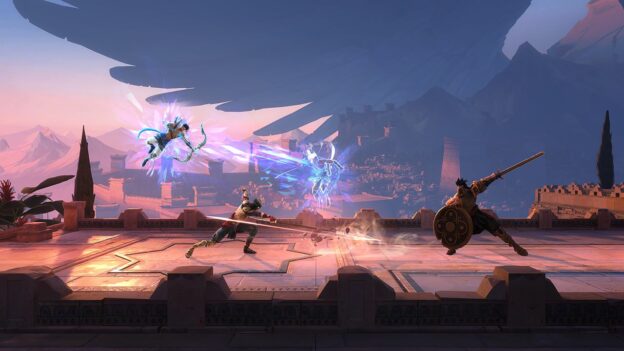
To that end, the developers have added some terrific accessibility features. There are five difficulty levels from which to choose, catering to everyone from casual to hardcore players. It also adds another reason to replay; if you make it through on an easier mode, you might be tempted to give it another go at a harder pace. If things are still too difficult (or easy), you can also toggle a “guided mode” on or off during play. This adds icons to the map that show the main objectives and makes navigation easier.
There are more accessibility options to keep everyone happy. When the game first loads, you’re given the freedom to choose from various settings including font size, contrast, HUD, and other elements that make playing a more enjoyable experience. It’s a trend I’ve noticed in other titles recently, and one I hope continues.
Speaking of navigation, I’m particularly happy with the way the map works. It can be a tricky thing to develop; other games lay things out in confusing ways, or perhaps make it too small to be useful. The mapping system in the Lost Crown is practically perfect. It unravels as you progress, making it easy to see where you are, where you’ve been, and where you need to get to.
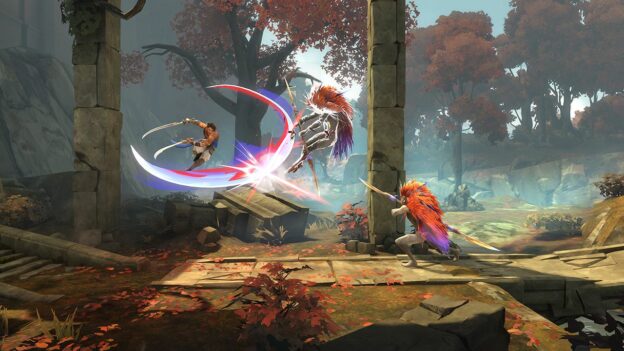
The best part of the map, though, is something called Memory shards. This is an image-capture feature that allows you to pin photos directly to the map. I love this feature. For example, if you stumble upon an out-of-reach area or treasure, you can take a snapshot and pin it to your current location. When you uncover a new ability, you can scan your map for these shards to see where you could use it to reach previously inaccessible items or areas. It reminds me of writing notes on my map during the glory days of the DS. It’s brilliant.
The Lost Crown is also visually stunning. It runs at a silky-smooth 60fps on the Nintendo Switch; kudos to the developers for taking this little handheld seriously. There are no lags, there are no loading screens, and the animations play wonderfully. In fact, this is the kind of optimization I’d expect from a first-party game. Everything runs well in both handheld and docked mode.
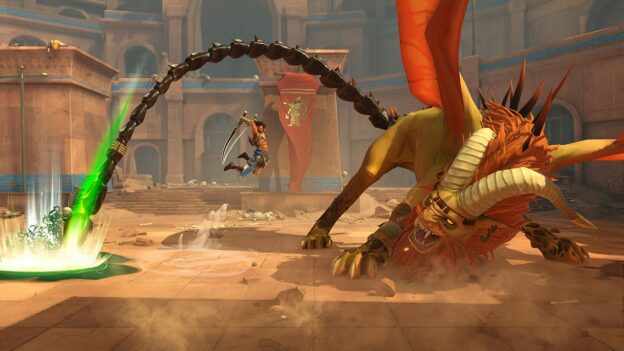
Graphically, each area features lush environments that pop off the screen. I noticed bugs scuttling by in the foreground, not to mention those impressively large statues frozen in time in the background. I particularly enjoyed seeing enemies creep in from the foreground before jumping into the middle section to attack. It adds so much depth! The cut scenes are another standout, with full voiceover work complementing the action.
Overall, Prince of Persia: The Lost Crown is a splendid return to form for the series. The developers have done a terrific job with an original story and a visually impressive title that’s well implemented on the Switch. The smooth gameplay, terrific map system, and satisfying combat and exploration make this a must-play for genre fans.
Review: Prince of Persia: The Lost Crown (Nintendo Switch)
Great
Prince of Persia: The Lost Crown is a splendid return to form for the series. The developers have done a terrific job with an original story and a visually impressive title that’s well implemented on the Switch. The smooth gameplay, terrific map system, and satisfying combat and exploration make this a must-play for genre fans.

